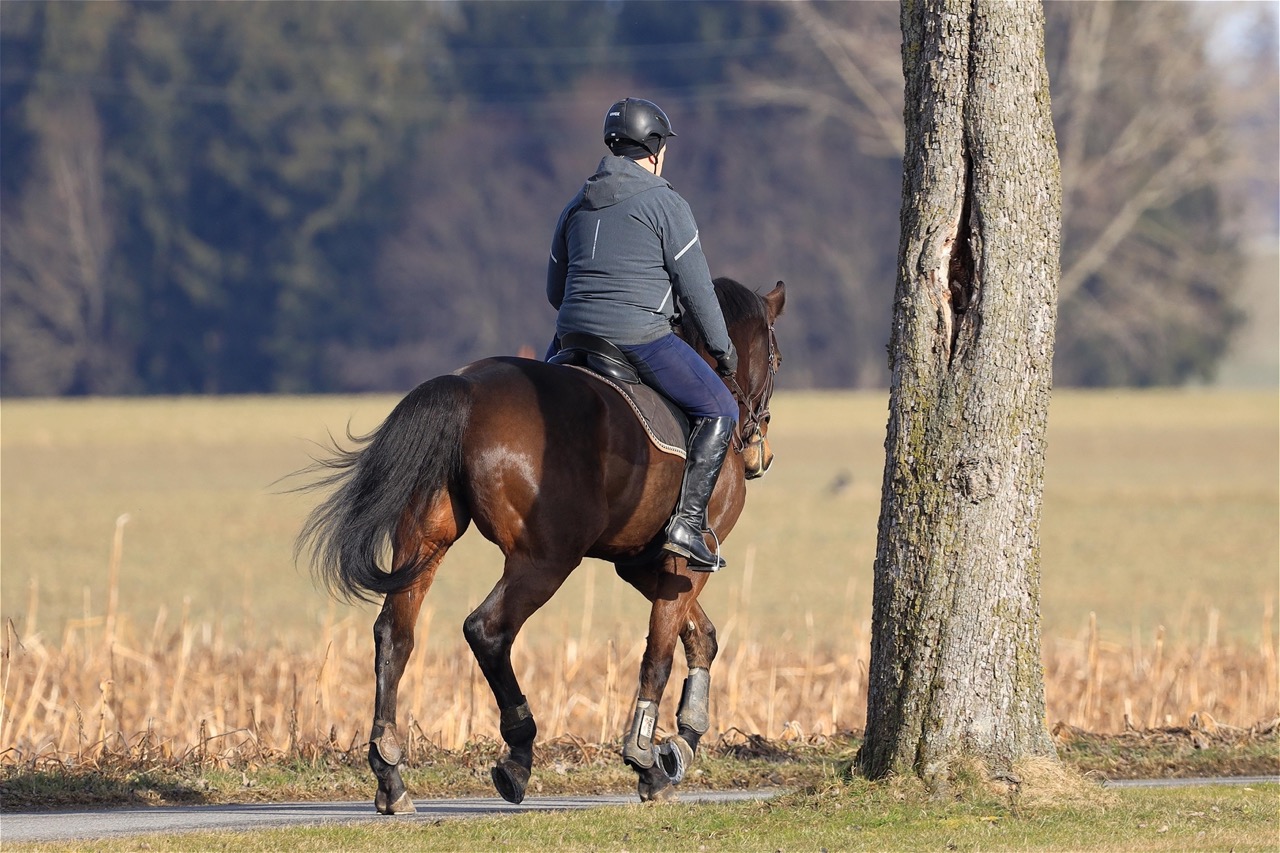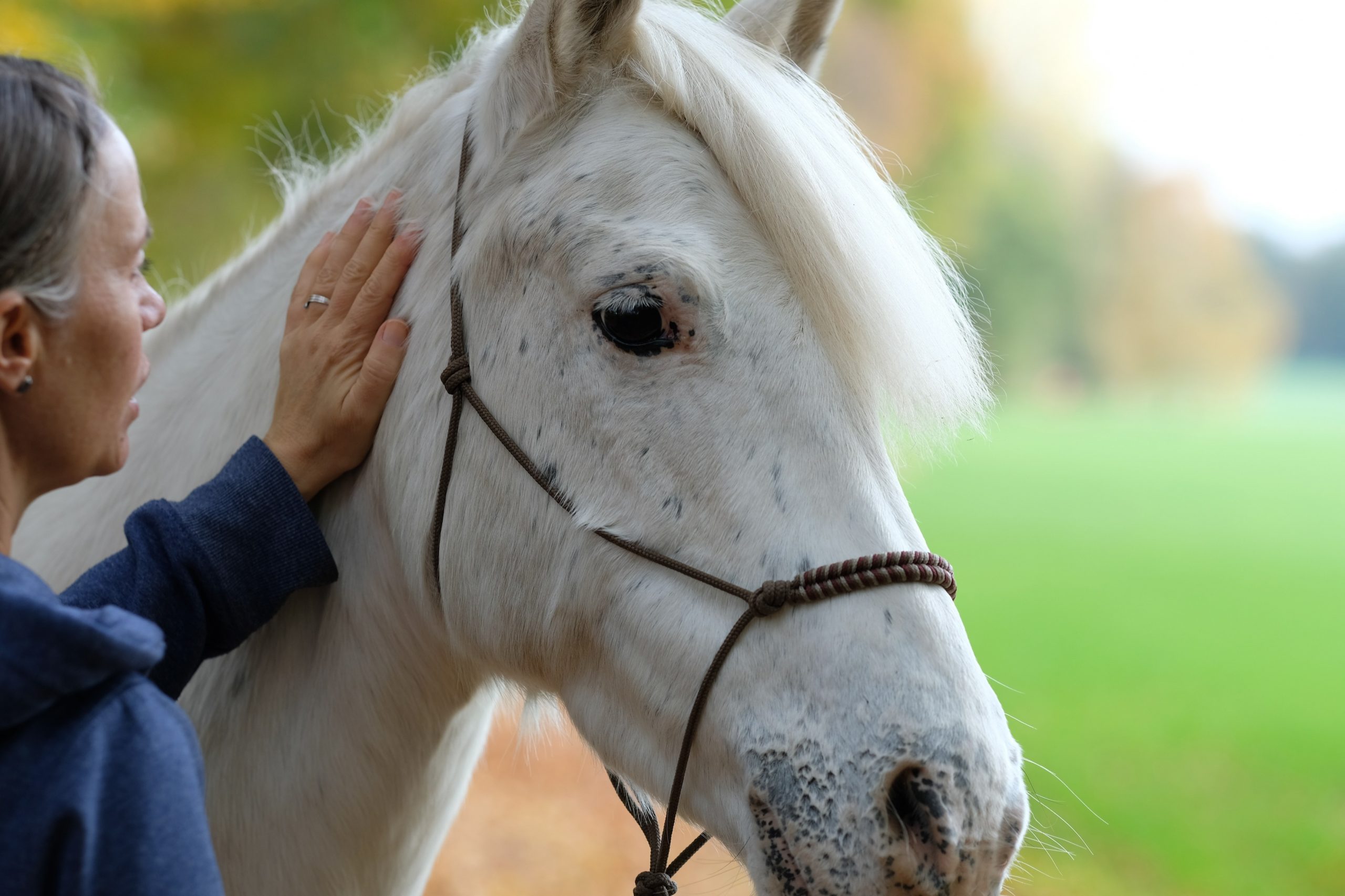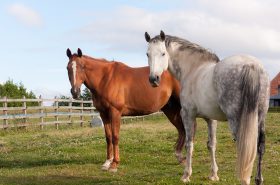Horse trainers often talk about desensitizing their horse to various objects and
situations.
Simply put, it helps the horse to overcome their natural flight response. They’re rewired to react more calmly and use the “thinking” side of their brain. In time, the horse gets a boost of confidence and they learn to trust their handler or rider. There are many different methods of desensitizing a horse. Some are well-known like approach and retreat; others are becoming more popular as trainers promote the idea. No matter what method you use, you’ll need to understand how your horse communicates and listen to their body language.
approach and retreat; others are becoming more popular as trainers promote the idea. No matter what method you use, you’ll need to understand how your horse communicates and listen to their body language.
Approach and Retreat
This method involves introducing the horse to a scary object, and then taking it away once they show signs of relaxation. Ideally, you’ll begin on the ground with a halter and lead rope. You’ll hold the horse and introduce the object by bringing it near them. They may become frightened and back away. You need to keep the object near them until they stand still and relax.
Relaxation signs include:
Standing still for at least 15 seconds
Licking their lips
Taking a big breath
Cocking their hind foot
Lowering their head
You can introduce a horse to nearly anything like fly spray, a flag, whip/training stick, clippers, and much more! It’s important you choose a good starting spot. You only want the horse slightly uncomfortable. Don’t send them into a full panic! Once your horse relaxes and you retreat, you can get closer with the object or stimulus on the next go around. Progress in baby steps…
Empathetic Approach
For those interested in taking a different approach, this method can be very useful. It allows the horse and handler to develop a relationship built on trust and mutual respect. It puts the needs of the horse first. The horse is able to move about as they feel comfortable. You introduce the scary object. If the horse moves away, you let them. At the same time, you take the object away when you notice tension or discomfort. The horse begins to realize that you helped to relieve that pressure and tension.
Eventually, the horse’s natural curiosity prompts them to investigate the object. Because you have offered them security, they will feel more comfort to explore. This method requires keen observation. You must notice subtle signs of tension like a rise in their head, lack of blinking, and fixated ears.
Returning to the Familiar
Yet another way to handle scary objects and situations is to keep hold of your horse’s attention. There should be exercises that your horse is confident with. Some examples may include backing, turn on the forehead or haunches, and leg yields. When a scary stimulus is introduced, the rider or handler should regain the horse’s focus by asking for an exercise the horse can easily do. This will help to boost their confidence and keep their attention on you. As they relax and focus on their work, the stimulus is no longer a big deal. Offering your horse a variety of experiences can be very beneficial! They will be better prepared for whatever comes their way. Take it slow and remember to listen to what they’re telling you.
A Confident Horse Starts with a Safe Environment!
Desensitizing your horse to new experiences is easier when they feel safe and secure. At Ramm Fence, we provide high-quality, horse-friendly fencing designed to protect your equine companion while they learn and grow in confidence.
🐴 Create a safe training space! Explore Our Horse Fencing Solutions and give your horse the security they need today.



